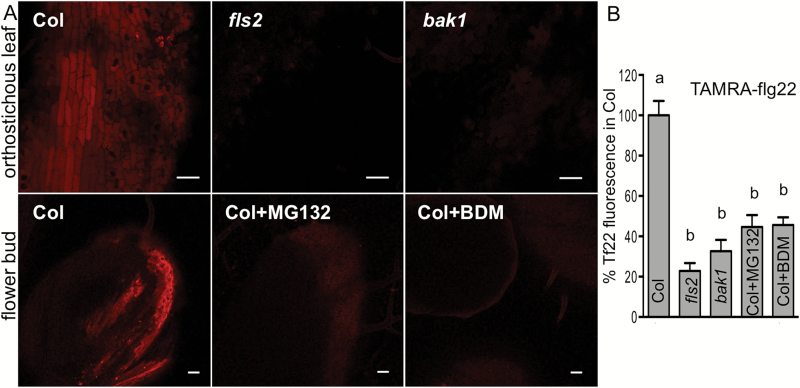Fig. 2.
flg22 long-distance movement depends on receptors and internalization. Five micromolar TAMRA–flg22 (Tf22) with or without inhibitors was applied on a filter paper disc placed on one leaf of in vitro-grown Arabidopsis, and orthostichous distal tissues (leaves and flowers) were imaged by confocal microscopy after 1 d. TAMRA–flg22 was transported more efficiently to distal tissue in Col than in fls2 and bak1 or in Col treated with inhibitors. (A) Representative confocal microscopy images of distal tissues 1 d after peptide application. Bar: 50 μm. (B) TAMRA fluorescence was quantified in images such as in (A) from at least four experiments (except BDM treatment in two experiments) and presented as percentage of fluorescence in distal tissue of Col. Letters indicate significant difference (P<0.0002, n≥7, ANOVA/Tukey’s test).

